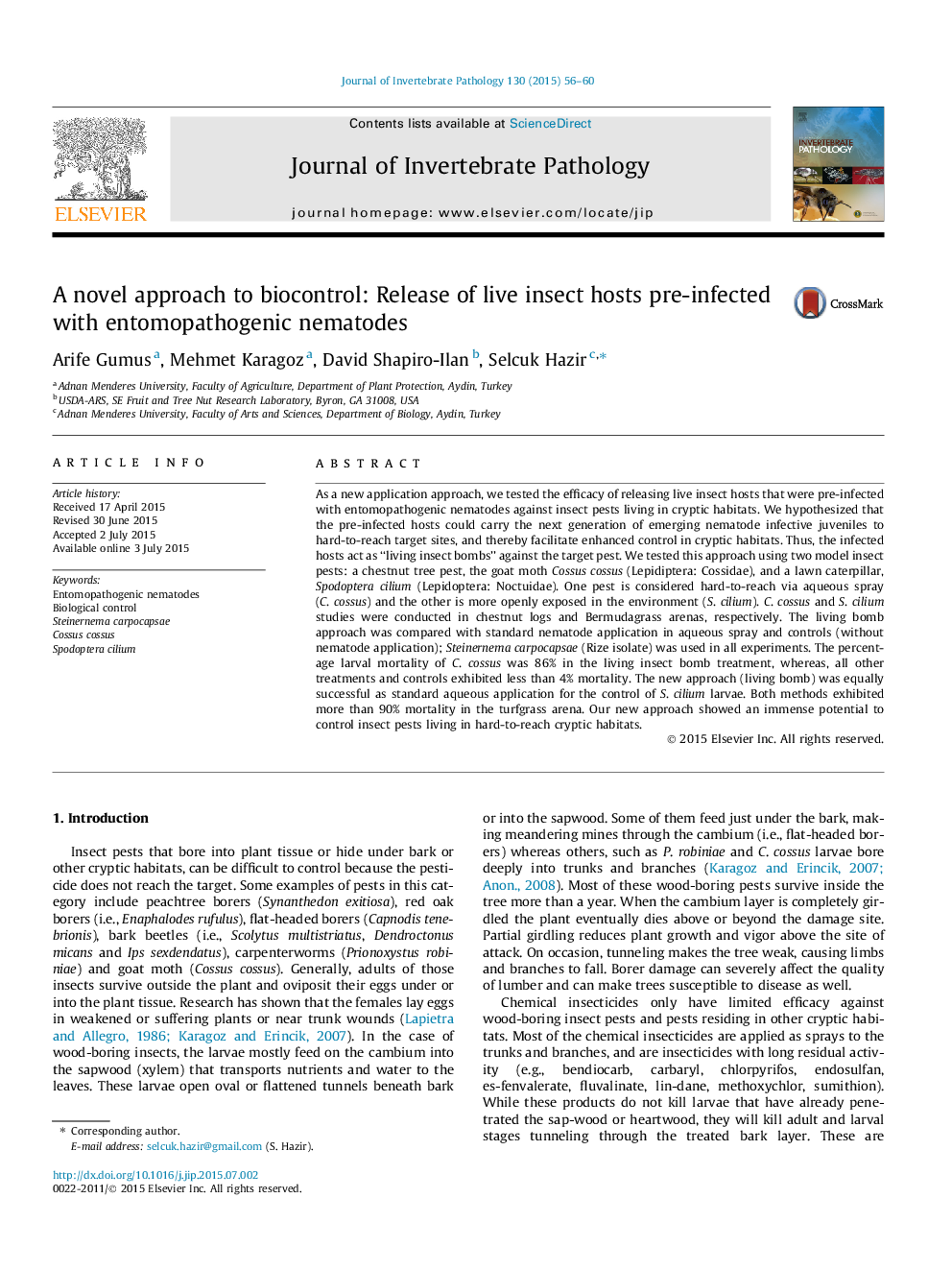| Article ID | Journal | Published Year | Pages | File Type |
|---|---|---|---|---|
| 6389327 | Journal of Invertebrate Pathology | 2015 | 5 Pages |
â¢We tested the efficacy of a new approach “living insect bombs” against the insect pests living in cryptic habitats.â¢The percentage larval mortality of Cossus cossus was 86%.â¢The living bomb exhibited more than 90% mortality against Spodoptera cilium.
As a new application approach, we tested the efficacy of releasing live insect hosts that were pre-infected with entomopathogenic nematodes against insect pests living in cryptic habitats. We hypothesized that the pre-infected hosts could carry the next generation of emerging nematode infective juveniles to hard-to-reach target sites, and thereby facilitate enhanced control in cryptic habitats. Thus, the infected hosts act as “living insect bombs” against the target pest. We tested this approach using two model insect pests: a chestnut tree pest, the goat moth Cossus cossus (Lepidiptera: Cossidae), and a lawn caterpillar, Spodoptera cilium (Lepidoptera: Noctuidae). One pest is considered hard-to-reach via aqueous spray (C. cossus) and the other is more openly exposed in the environment (S. cilium). C. cossus and S. cilium studies were conducted in chestnut logs and Bermudagrass arenas, respectively. The living bomb approach was compared with standard nematode application in aqueous spray and controls (without nematode application); Steinernema carpocapsae (Rize isolate) was used in all experiments. The percentage larval mortality of C. cossus was 86% in the living insect bomb treatment, whereas, all other treatments and controls exhibited less than 4% mortality. The new approach (living bomb) was equally successful as standard aqueous application for the control of S. cilium larvae. Both methods exhibited more than 90% mortality in the turfgrass arena. Our new approach showed an immense potential to control insect pests living in hard-to-reach cryptic habitats.
Graphical abstractDownload full-size image
